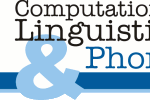Parallelism in Human Parsing
Most previous research in human sentence processing has focused on ambiguity resolution. There are, however, other factors that appear to play an important role in determining the behaviour of the sentence processor. One such factor is parallelism across utterances, known as priming. Such priming effects have been demonstrated to occur at lexical, syntactic, and semantic levels (see Pickering & Branigan, 1999, for review and discussion), with most research focusing on language production. Recent evidence suggests, however, that within-sentence facilitation in comprehension also occurs when repeated, or parallel, structures are encountered.
Parallelism is potentially very important for explaining the efficiency of the human parser, and the nature of the mechanisms involved in the incremental recovery of sentence structure. Specifically, it seems likely to be a pervasive phenomenon of sentence perception, which is likely to manifest itself across languages. Understanding the linguistically relevant levels for parallelism, and the environments in which it occurs, has the potential to reveal important properties of the machinery underlying comprehension.
While traditional symbolic approaches have difficulty in explaining and modelling such dynamical aspects of processing, recent developments in stochastic modelling, such as probabilistic and connectionist models, potentially offer more natural accounts. The present project will investigate the mechanisms underlying parallelism and its interaction with ambiguity resolution, using a combination of experiments and computational modelling studies.
Coordinate structures will be the test case for our investigation of the role of parallelism in human sentence processing. Coordination is a highly frequent construction that is furthermore universal in human languages, making it straightforward to conduct cross-language studies. The goals of the experimental part of the project are the following:
- We will conduct a series of experiments to establish the role of phonological parallelism in processing coordinate structures. So far only structural parallelism has been investigated. The prediction is that besides parallelism in structure, parallelism in length or rhythm also facilitates processing of conjuncts.
- We will carry out a series of experiments to investigate whether parallelism is different from syntactic priming. The processing advantage for parallel structures has been claimed to be limited to particular syntactic constructions (e.g., coordination), while syntactic priming is a more general tendency to reuse structures that have occurred in subsequent constructions, and across sentence boundaries. We will test for parallelism effects on different levels of sentence structure and in constructions other than coordination.
- We will explore the relation between structural parallelism and ambiguity resolution in sentence processing. The hypothesis is that the building of parallel structures can override structural biases, and thus facilitate the resolution of ambiguities that occur in coordination. A cross-language comparison between English and German is here especially interesting, since case marking in German but not in English can guide coordination ambiguity.

